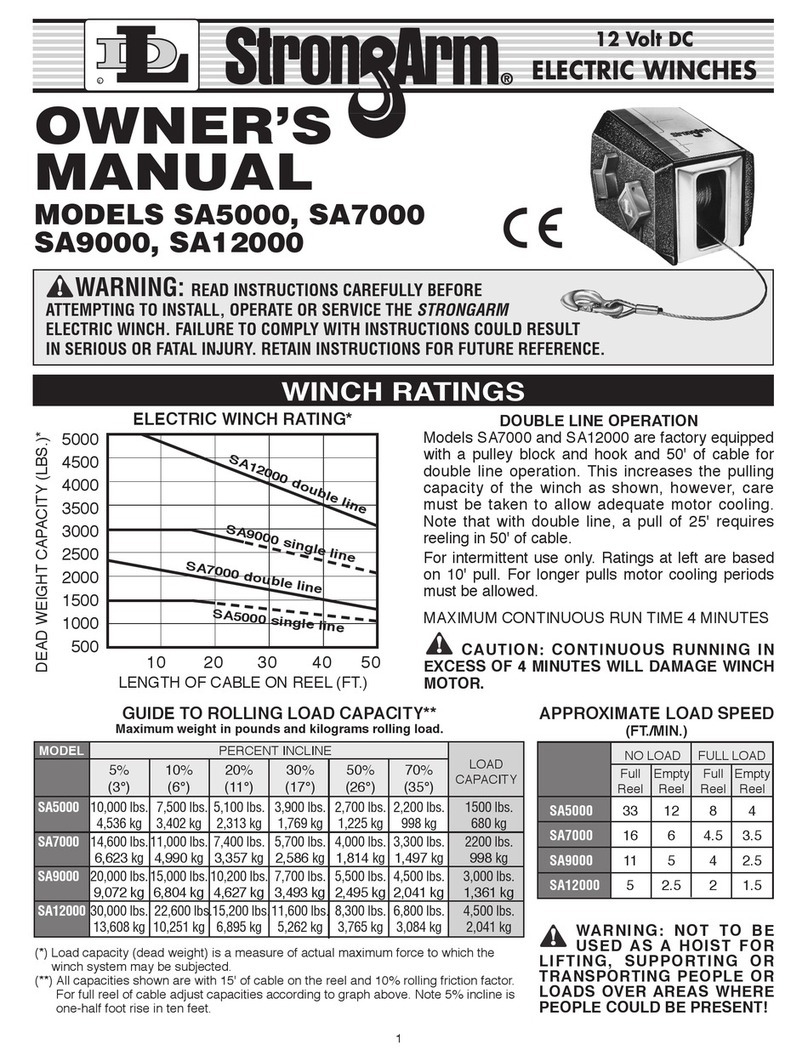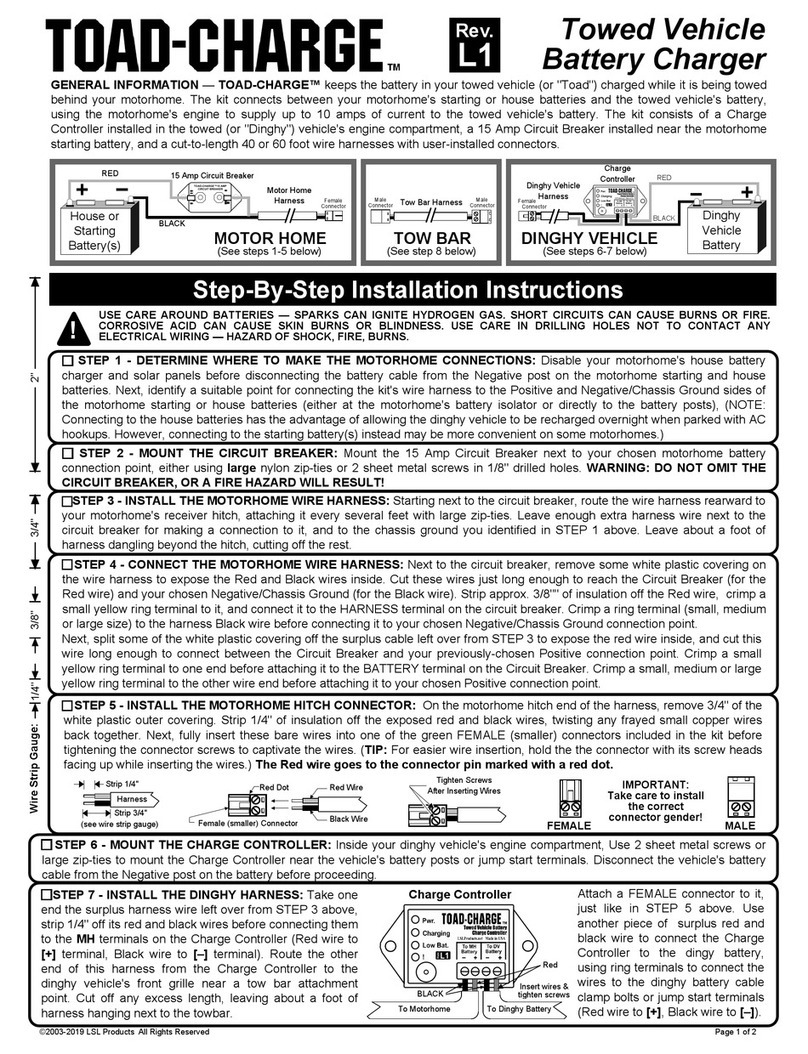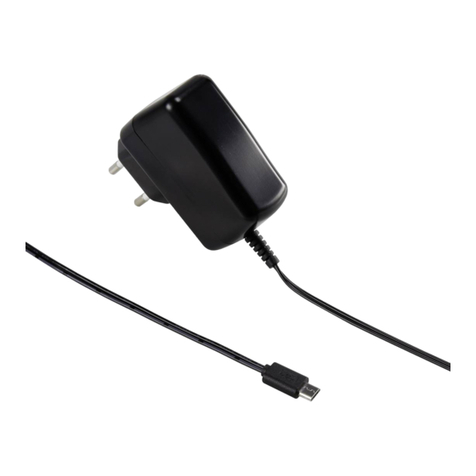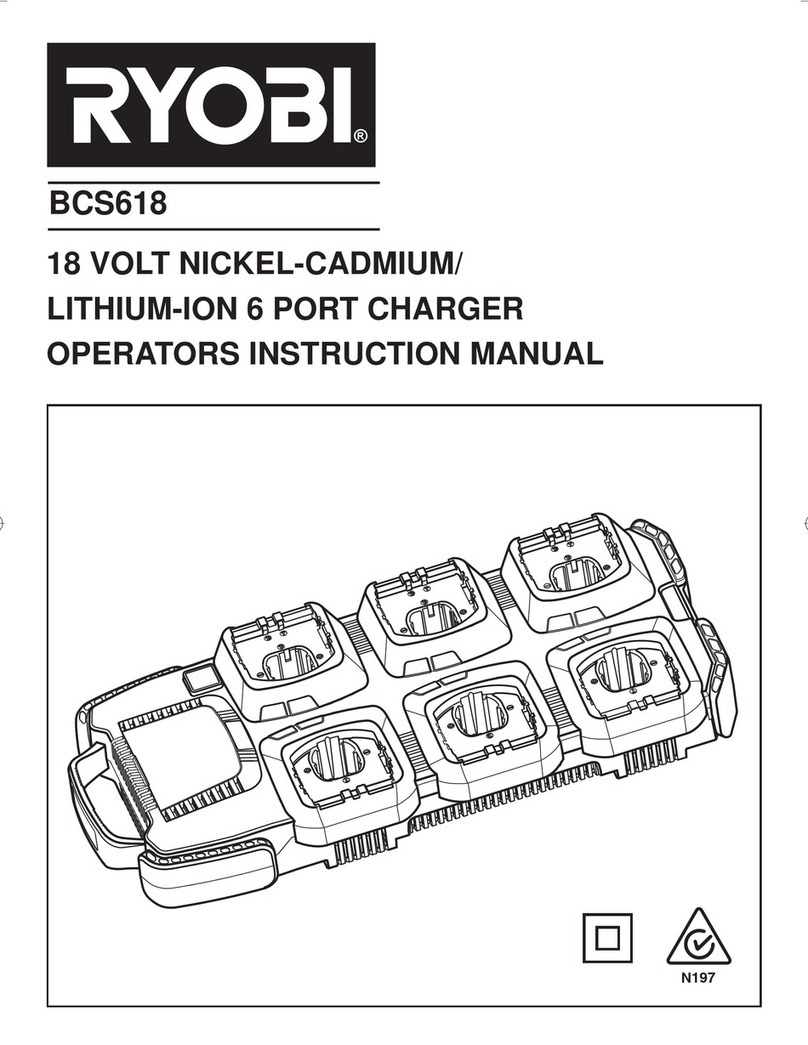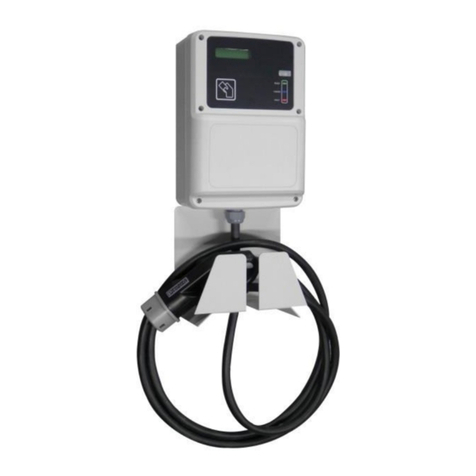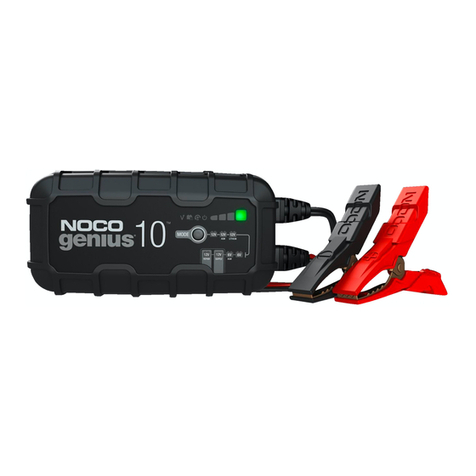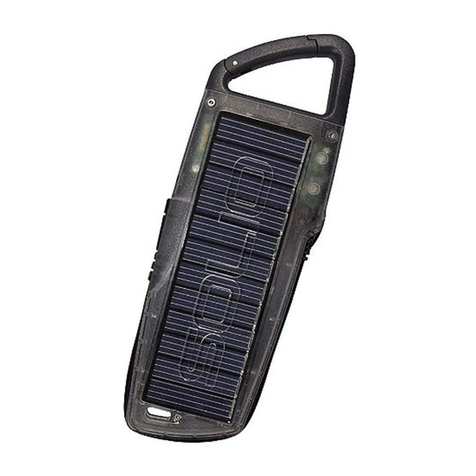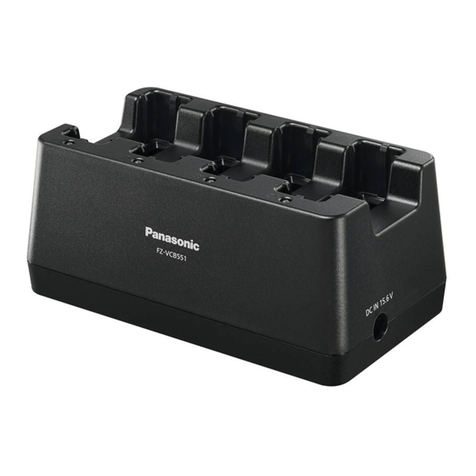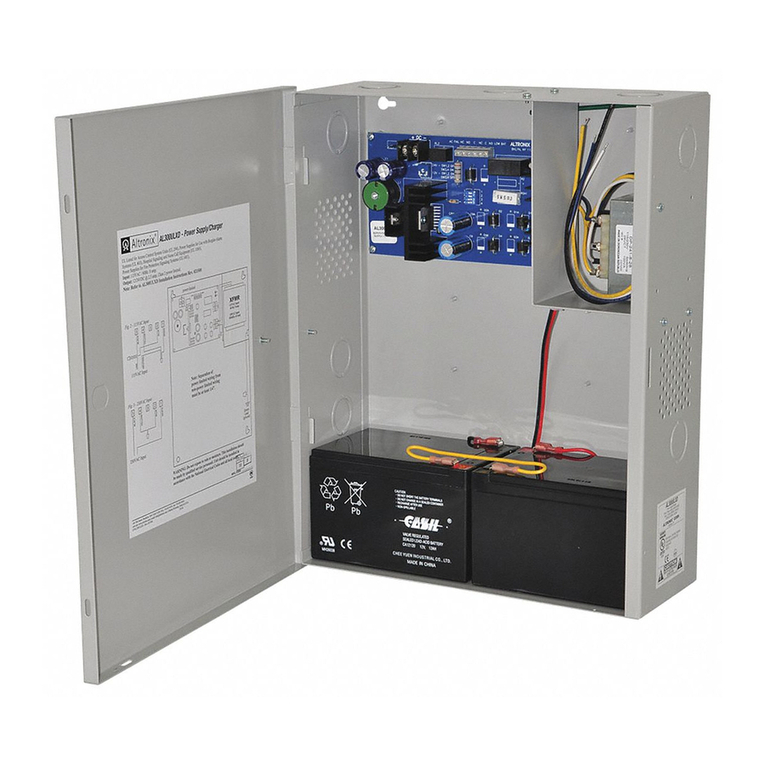Enovation Controls Murphy Sentinel 150 Series Installation and operating instructions

yi6503
revision A, 2017-02-24
Sentinel 150 series
Automatic switch mode battery chargers
Installation, Operation and Maintenance
This Manual Refers to the Following Models
Standard models
UL recognised/listed models
Open frame
models
SNTL1501205CDxx
SNTL1502405CDxx
SNTL1501210CDxx
SNTLUL1501205CDxx
SNTLUL1502405CDxx
SNTLUL1501210CDxx
Enclosed
models
ESNTL1501205CDxx
ESNTL1502405CDxx
ESNTL1501210CDxx
ESNTLUL1501205CDxx
ESNTLUL1502405CDxx
ESNTLUL1501210CDxx
ESNTLUL1501210CDxxNFPA
Note: “xx” above refers to battery type options specified on order: see pages 3 and 6 (DC Output calibration) for battery types/voltages.
For safe and correct use of these chargers, read and save the safety
information that precedes the installation and operation instructions.
This guide contains 8 pages (including this one). If any pages are missing,
contact the battery charger supplier or manufacturer for replacement
documentation.
Sentinel 150 (open-frame, with protective cover)
SNTL150 model shown
Enclosed Sentinel 150
ESNTLUL150 (left) and ESNTLUL150xxNFPA (right) models shown
In order to consistently bring you the highest quality, full featured products, we reserve the right to change our specifications and designs at any time. MURPHY products and the Murphy
logo are registered and/or common law trademarks of Enovation Controls LLC. This document, including textual matter and illus trations, is copyright protected by Enovation Controls Ltd.,
with all rights reserved. © 2017 Enovation Controls Ltd. A copy of the warranty may be viewed or printed by going to
http://murphybyenovationcontrols.com/warranty

Sentinel (UL)150 installation, operation & maintenance
yi6503 revision A 2017-02-24 p2/8
Important Safety Information –Read and Save These Instructions
This manual contains important safety and operating instructions for all SNTL150, SNTLUL150, ESNTL150 & ESNTLUL150 models.
Do not expose the battery charger to rain, snow or wet environments.
The use of any attachment not recommended or sold by the battery charger manufacturer may result in risk of fire, electric
shock or injury to persons.
Do not operate the charger if it has received a sharp blow, been dropped, or otherwise damaged in any way: return to supplier.
Do not disassemble the charger: return to supplier when service or repair is required. Incorrect re-assembly may result in a risk
of electric shock, fire or faulty operation.
WARNING –RISK OF EXPLOSIVE GASES
WORKING IN THE VICINITY OF A LEAD ACID BATTERY IS DANGEROUS. BATTERIES GENERATE EXPLOSIVE GASES
DURING NORMAL BATTERY OPERATION.
To reduce the risk of battery explosion, follow these instructions and those published by battery manufacturers and the
manufacturer of any equipment you intend to use in the vicinity of the battery. Review cautionary marking on these products and
any attached equipment.
PERSONAL PRECAUTIONS.
(i) Someone should be within range of your voice or close enough to come to your aid when you work near a lead-acid battery.
(ii) Have plenty of fresh water and soap nearby in case battery acid contacts skin, eyes or clothing.
(iii) Wear complete eye protection and clothing protection. Avoid touching eyes whilst working near batteries.
(iv) If battery acid contacts skin or clothing, wash immediately with soap and water. If acid enters eyes, immediately flood eyes
with running cold water for at least 10 minutes and get immediate medical attention.
(v) NEVER smoke or allow a spark or flame in vicinity of battery.
(vi) Be extra cautious to reduce risk of dropping a metal tool on to the battery. It may spark or short-circuit the battery or other
electrical part that may cause explosion.
(vii) Remove personal metal items such as rings, bracelets, necklaces and watches when working with batteries. High power
batteries can produce a short-circuit current high enough to weld a ring or the like to metal, causing a severe burns.
(viii) Use the charger only for charging battery types as stated on the charger. Do not use the charger for charging dry-cell
batteries that are commonly used with home appliances. These batteries may burst and cause injury to persons and damage to
property.
(ix) NEVER CHARGE A FROZEN BATTERY
PRIOR TO INSTALLATION /COMMISSIONING
Clean battery terminals. Be careful to keep corrosion from coming into contact with eyes.
Add distilled water in each cell until the battery acid reaches a level specified by battery manufacturer. This helps purge
excessive gas from the cell. Do not overfill. For a battery without cell caps, carefully follow manufacturer’s recharging
instructions.
Study all battery manufacturer’s specific precautions, such as removing or not removing cell caps while charging and
recommended rates of charge.
Determine the voltage of battery by referring to engine manual and ensure this matches the charger’s output voltage.
CHARGER LOCATION AND CONNECTION
Never place the charger directly above battery being charged: gases from the battery will corrode and damage the charger.
Never allow battery acid to drip on to the charger when reading specific gravity or filling battery.
Do not operate the charger in a closed-in area or restrict ventilation in any way.
The battery charger should be connected to a grounded, metal, permanent wiring system; or an equipment–grounding
conductor should be run with circuit conductors not connected to equipment-grounding terminal on the battery charger.
Connections to the battery charger should comply with all local codes and ordinances.
Open frame SNTL models –these chargers should be installed so that they are not likely to be contacted by people.
Wiring for the AC supply input, DC charge output and DC control (e.g. alarm output) circuits must be physically separate, e.g.
using separate wire harnesses and cable gland access. For AC input and ground leads, use 1mm²/17 AWG or larger wire
conductors rated to 90°C/194°F. For DC (charger to battery) leads, use 2.5mm²/13 AWG or larger wire on standard charger
models, and 4mm²/11 AWG or larger wire on NFPA models.
For safe and correct use of the charger, follow the following steps. Should you have any problems or the unit does not function as
expected, consult our troubleshooting guide at the end of these instructions.
Visually inspect unit for any signs of damage, caused by transport or storage.
Mount the charger as outlined above, paying attention to ambient temperature.
Ensure the mains AC supply is isolated, and ensure the correct rated input voltage before connection.
Ensure the charger is earthed at the marked earth terminal/stud.
Check batteries in accordance with the manufacturer’s guidelines.
Check that the charger is correct for battery type and voltage.
Connect the charger to the batteries, observing correct polarity and ensuring a secure and tight connection.
Switch on the charger at the mains AC power supply.

Sentinel (UL)150 installation, operation & maintenance
yi6503 revision A 2017-02-24 p3/8
BEFORE BEGINNING INSTALLATION OF THIS PRODUCT
Disconnect all electrical power to the charger
Make sure the charger cannot operate during installation
Follow all safety warnings of the battery manufacturer
Read and follow all installation instructions
W A R N I N G
The Sentinel 150 range provides automatic, current limited and
voltage controlled charging of wet lead acid, VRLA or NiCd
batteries. The units may be used in a wide range of industrial
charging applications, including standby engines, pumps and
generators.
Sentinel uses switch mode power supply technology to give a
compact and lightweight construction, improved efficiency and
low heat dissipation, wide supply voltage tolerance and low
output ripple.
Sentinel chargers are available as an open-frame module (with
protective cover) for surface or DIN rail mounting in an enclosed
panel, or as a stainless steel, wall-mounted enclosure with DC
charge ammeter (and voltmeter on NFPA models). Electrical
connection of the AC supply, battery and control circuits is via
screw terminal blocks.
Float charge operation
Sentinel operates an intelligent, multi-stage battery charge
regime. In normal charging mode, the charger maintains the
battery at a pre-calibrated float voltage (see table right), while
supplying any additional DC load up to the specified current limit
(see Specifications right).
When fully charged, a battery will only accept the charge
required to replace internal losses (approx. 1mA per AH of
battery). E.g. for a system with a 1 Amp standing load and a
fully charged 50 AH lead acid battery, Sentinel will typically
supply 1.05 Amps.
AutoBoost operation
All Sentinel 150 models include an AutoBoost feature.
AutoBoost provides a temporary increase in output voltage,
equalising the charge between cells and maximising battery life
and capacity.
AutoBoost is triggered automatically when the battery falls
below a preset voltage, or can be initiated manually (whatever
the battery voltage) via a momentary switch input. Once the
batteries have reached the boost voltage level, Sentinel reverts
to normal float charge mode, preventing battery over-charge
and gassing.
Temperature compensation
The optimum charge voltage for lead acid and NiCd batteries
varies with ambient temperature. Sentinel can be configured to
sense ambient temperature and automatically compensate the
output charge voltage.
Configuration is by links on the circuit board: temperature
compensation can be disabled, or enabled for use with a remote
‘RTC’ sensor (available separately as a standard3 metre / 9.8
feet lead assembly, or other lengths to special order).
Alarm outputs
UL models include a self-diagnostic circuit charge fail / main
AC fail relay output (switched positive contact), for driving a
remote alarm or annunciator circuit.
Enclosed NFPA models include two additional relay outputs
(volt-free/dry contacts) for independent signalling of high and
low battery voltage faults, and compliance with the
NFPA 110 standard.
General Information
Please read the following before installing. A visual inspection of this product for damage during shipping is
recommended before installation. It is your responsibility to ensure that qualified mechanical and electrical
technicians install this product. If in doubt, please contact your local Murphy or Enovation Controls representative.
Specifications
power supply:
(E)SNTL(UL)
1501205
(E)SNTL(UL)
1502405
ESNTLUL
1501210
xxNFPA
operating voltage range:
standard (non-UL) models:
UL approved models
operating frequency
95 –265 V AC
95 –250 V AC
47 –63 Hz
DC charge output:
nominal voltage
12
24
12
float / boost voltages
see DC output calibration table
current limit
5
5
10
line regulation
< 2%
load regulation
< 2%
output ripple
< 1%
alarm outputs:
charge fail /
mains AC failure
(UL models only)
solid state relay (switched +DC),
energised (+DC) during normal charge,
de-energised (open circuit) during fault
low battery volts
(NFPA models only):
solid state relay
(volt free/dry SPNC contacts),
energised (open) during normal charge,
de-energised (closed) during fault
high battery volts
(NFPA models only)
solid state relay
(volt free/dry SPNO contacts),
de-energised (open) during normal charge,
energised (closed) during fault
current rating (all relays)
250mA max. @ 30 V DC
(resistive load), UL class 2
general:
operating temperature
-20 to +60 °C / -4 to +140 °F
humidity
20% to 90% RH
dimensions
see Dimensions & Assembly
weights
see Dimensions & Assembly
electrical safety
2006/95/EC (EN 60065)
electromagnetic compatibility
2004/108/EC
(EN 61000-6-2, EN 61000-6-4)
UL approval:
All UL models:
BBGQ: UL1236,
CSA 22.2 no 107.2
ESNTLUL1501210xxNFPA
models only
BBHH: UL1236 SE
DC output calibration
Battery type:
model
option
code
float
volts
(V DC)
boost
volts
(V DC)
12V
Vented lead acid (6 cells)
LA
13.5
14.1
Calcium-Calcium (6 cells)
CA
13.8
15.6
VRLA, AGM (6 cells)
AGM
13.5
14.4
VRLA, Gel (6 cells)
GEL
13.5
13.8
NiCd (10 cells)
10NC
14.1
14.5
24V
Vented Lead acid (12 cells)
LA
27.0
28.2
Calcium-Calcium (12 cells)
CA
27.6
31.2
VRLA, AGM (12 cells)
AGM
27.0
28.8
VRLA, Gel (12 cells)
GEL
27.0
27.6
NiCd (18 cells)
18NC
25.6
26.1
NiCd (20 cells)
20NC
28.2
29.0
Note: Calibration figures at 20 deg C. Output voltage will vary if
temperature compensation is enabled –see Electrical Connection &
Configuration section.

Sentinel (UL)150 installation, operation & maintenance
yi6503 revision A 2017-02-24 p4/8
Dimensions and Assembly
CAUTION: Sentinel 150 chargers should be handled by the circuit board cover (SNTL models) or steel enclosure
(ESNTL models). Care should be taken not to handle static sensitive components through exposed circuit boards
and terminals.
SNTL(UL)150xx models
Overall:
W
110 mm / 4.33 in.
H
135 mm / 5.31 in.
D
78 mm / 3.07 in.
Fixing holes:
X
100 mm / 3.94 in.
Y1
115 mm / 4.53 in.
Y2
57.5 mm / 2.26 in.
Weight:
0.55 kg / 1.2 lb.
These chargers are designed for
mounting in a vertical plane inside
an enclosed control panel or
housing. Mounting orientation
should be as shown above, with
protective cover ventilation slots at
the top & bottom, electrical
connection terminals lowermost.
For safe heat dissipation, mount
Sentinel in the orientation shown,
with a minimum air-gap clearance
of 40mm/1.5 in. above/below
and 25mm/1 in. at the sides.
Consideration must be given to
ventilation for proper heat
dissipation.
For surface mounting, use the
2 centre slots (Ø 6mm/0.24 in.) or
4 corner slots (Ø 6mm/0.24 in.).
Ensure that the mounting
studs/bolts/nuts/screws adequately
support the charger, and are
tightened sufficiently to not to
become loose during normal use,
e.g. due to engine/equipment
vibration.
Optional clip for DIN rail mounting
(2 required for each charger), part
number 045-0001.
ESNTL(UL)150xx models
ESNTLUL150xxNFPA models
ESNTL(UL)150xx
models
ESNTLUL150xxNFPA
models
Overall:
W
120 mm / 4.72 in.
165 mm / 6.50 in.
H1
267 mm / 10.51 in.
300 mm / 11.81 in.
H2
70 mm / 2.76 in.
80 mm / 3.15 in.
D1
95 mm / 3.74 in.
125 mm / 4.92 in.
D2
130 mm / 5.12 in.
Fixing holes:
X
63.5 mm / 2.50 in.
Y
255 mm / 10.04 in.
285.5 mm / 11.25 in.
Weight:
1.25 kg / 2.8 lb.
2.0 kg / 4.4 lb.
These chargers are designed for wall or frame mounting in the orientation shown
above, with enclosure air vents uppermost. For safe heat dissipation, allow a minimum
air-gap clearance of 40mm/1.5 in. above/below and 25mm/1 in. at the sides.
Consideration must be given to ventilation for proper heat dissipation.
Mounting is via the enclosure back-plate, using 4 holes/slots (Ø 6mm/0.24in.) on the
upper and lower edges. Ensure that the mounting studs/bolts/nuts/ screws adequately
support the charger weight, and are tightened sufficiently to not to become loose
during normal use, e.g. due to engine/equipment vibration.
Access to the electrical connection terminals is via hinged lower sections on the front
facia. Remove the 2 x securing screws (marked S above), and then rotate the hinged
sections through 90 degrees.
Electrical cable entry is via knock-outs on either side of the enclosure, which
must be carefully removed from the enclosure sides. A suitable cable-gland
(20mm/0.8in. diam.) must be used to prevent damage to cables and stop unwanted
entry into the inner part of charger. Cable harnesses for DC charge output, DC control
and AC supply input must be physically separated, e.g. using separate harnesses and
case access ports: see ‘wire harness separation’ section on page 5.
Connect the charger wiring as detailed in the following Electrical Connection section.
When wiring is complete, and before using the charger, re-secure the hinged front
section using the 2 fixing screws.

Sentinel (UL)150 installation, operation & maintenance
yi6503 revision A 2017-02-24 p5/8
Connection terminals (general)
Open frame SNTL(UL)150 models:
Open frame Sentinels use a pair of two-part connectors with
removable screw terminal blocks:
CN1: one 7-way block for connection of the DC Charge
Output, RTC remote temperature sensor, AutoBoost
manual initiate and (UL models only) charge fail output.
Use a 3 mm/0.1 in. flat-head screwdriver to tighten/ loosen
the terminals.
CN3: one 3-way block for connection of the mains AC
power supply. Use a 5mm/0.2in flat-head screwdriver
to tighten/loosen the terminals. For details of wire ratings
and fusing, see the AC Input (power supply) section
following.
CN3 AC input terminal numbering varies with model. Check
the product label for connection details:
SNTL150 (standard, non-UL) models: AC supply live,
neutral and ground wires are all connected to CN3:
SNTLUL150 (UL approved) models: AC supply live and
neutral wires are connected to CN3; the AC supply ground
wire must be connected to a separate M4 stud labelled FG
(frame ground) on the metal baseplate:
Enclosed ESNTL150 and ESNTUL150 models
(except ESNTLUL150xxNFPA)
Enclosed ESNTL(UL)150 models have the same circuit
board, terminal numbering and connection requirements as
open-frame SNTL(UL)150 models, but are fitted with
standard (non-removable) screw terminals blocks. Access to
the screw terminals, and access for the wiring harness (via
cable glands), is detailed in the Dimensions and Assembly
section.
Enclosed ESNTLUL150xxNFPA models
Connection on these models through three terminal blocks
on an additional circuit board, which also includes two
additional NFPA 110 compliant alarm outputs.
CN1: a 2-way block for the DC Charge Output. Use a
5mm/0.2in flat-head screwdriver to tighten/loosen the
terminals. See DC Charge Output section following for
details of wire ratings and and fusing.
CN2: a 9-way block for connection of RTC remote
temperature sensor, AutoBoost manual initiate and three
NFPA 110 compliant alarm relay outputs.
CN3: a 3-way block for the AC power supply. Use a
5mm/0.2in flat-head screwdriver to tighten/loosen the
terminals. See AC Input (power supply) section following
for details of wire ratings and fusing.
Terminal arrangement:
All models –wire harness separation
For all models, wire connections for the DC charge output,
DC control signals and AC input supply must be physically
separated, e.g. separate wire harnesses, separately routed
through the case/panel. For enclosed ESNTL models, use
separate cable access ports (ESNTLUL150xxNFPA model
shown below):
Electrical Connection & Configuration
DANGER!
HIGHVOLTS
WARNING: DANGER OF INJURY OR DEATH. During normal operation, Sentinel is
connected to high voltage AC circuits. Before connection, disconnection or handling of
these chargers, ensure isolation of all AC power supplies. Connection or disconnection
with live wiring can also cause hazardous sparking and component damage.

Sentinel (UL)150 installation, operation & maintenance
yi6503 revision A 2017-02-24 p6/8
DC Charge Output
Before DC connection or disconnection:-
Ensure AC supply input is isolated.
Disconnecting the batteries while the
AC supply is live can result in sparking at
the battery terminals, ignition of battery
gasses and serious personal injury.
Check that the charger model and output
ratings are compatible with battery type &
voltage (see table below). Incompatibility
may result in damage to the charger,
batteries and serious personal injury.
Connect the Sentinel DC charge output to the battery
terminals, observing the warnings above and the correct
DC polarity. Use 4mm²/11 AWG or larger wire for
ESNTLUL150xxNFPA models (10A DC output). For all other
models (5A DC output), use 2.5mm²/13 AWG or
larger wire.
All Sentinel 150 models include an electronic, self-resetting
DC output fuse for protection of reverse polarity and short-
circuit faults. In the event of such faults, isolate the AC
supply, disconnect the output terminals and allow the fuse to
self-reset; replacement of the fuse should not be necessary.
The charger can then be re-connected and switched back on.
If the fuse fails to reset, contact your supplier for further
advice.
Float & AutoBoost output voltages
The DC output float and AutoBoost voltages are factory
calibrated for the battery type specified at order. The battery
type is identified on the charger rating label, and forms part of
the model code. Standard calibrations are:
Battery type
model
option
code
float
volts
(V DC)
boost
volts
(V DC)
12V
Vented lead acid (6 cells)
LA
13.5
14.1
Calcium-Calcium (6 cells)
CA
13.8
15.6
VRLA, AGM (6 cells)
AGM
13.5
14.4
VRLA, Gel (6 cells)
GEL
13.5
13.8
NiCd (10 cells)
10NC
14.1
14.5
24V
Vented Lead acid (12 cells)
LA
27.0
28.2
Calcium-Calcium (12 cells)
CA
27.6
31.2
VRLA, AGM (12 cells)
AGM
27.0
28.8
VRLA, Gel (12 cells)
GEL
27.0
27.6
NiCd (18 cells)
18NC
25.6
26.1
NiCd (20 cells)
20NC
28.2
29.0
Note: Calibration figures at 20 deg C. Output voltage will vary if
temperature compensation is enabled –see section following.
TC: Temperature Compensation
Automatic temperature compensation (of the DC output) is
configured using a row of four circuit board pins, located
between the two terminal blocks on the main circuit board.
Pin header configuration is:
Link
position /
mode
Description
Disabled
(Factory default setting). Temperature
compensation disabled. Ambient temperature
does not affect DC float and boost voltages.
Use this setting if battery temperature does
not deviate significantly from 20°C.
External
Temperature compensation enabled, with
measurement by external, battery-mounted
RTC sensor (see below).
DC output varies by 3mV per cell per °C of
temperature deviation from 20°C, within the
range -10 to +50°C. Increasing temperatures
result in decreasing output voltage; decreasing
temperatures result in increasing output
voltage.
Use this setting for optimal temperature
measurement and compensated DC charge
output.
Internal
Not for customer use. Temperature
measurement by internal sensor, for factory
calibration only.
The two TC terminals are designed for connection to a
Murphy RTC sensor, and ONLY when the Sentinel is
configured for external temperature sensing. DO NOT
connect other types of temperature sensor.
When an RTC sensor is connected, the sensor head must
be mounted in a position that gives the most accurate/
representative measurement of battery temperature.
The standard RTC sensor (part code 42.70.3900) includes a
3 metre lead assembly. Non-standard lead lengths are
available to special order.
Alarm outputs (UL models only):
All UL models
UL approved Sentinels include a self-diagnostic ‘charge fail’
(C/F) circuit and relay output for driving a remote relay,
alarm or fault annunciator. The solid state relay energises
(positive DC output, 250mA max. Current @ 30VDC) during
normal charging, and de-energises (open circuit)
immediately following a DC charge fail or mains AC failure
condition, e.g. loss of AC supply, AC fuse failure, DC fuse
failure or low/no charge current.
Electrical Connection & Configuration (cont.)
Typical Connection
Notes:
1) AC fusing (F1): see AC Input (power supply) section
2) DC fusing (F2): see DC Output section
3) Battery output is isolated from chassis.
4) Solid state charge fail output relay (UL models only)
shown in de-energised (fault) state.
5) High and low battery volts outputs (UL...NFPA
version) are not shown.
6) AC supply input ground/earth connection:
- CN3 pin 3 on standard (non-UL) models
- M4 chassis stud (marked FG) on UL models

Sentinel (UL)150 installation, operation & maintenance
yi6503 revision A 2017-02-24 p7/8
Electrical Connection & Configuration (cont.)
Alarm outputs (cont.)
ESNTLUL150xxNFPA models
These models have two additional alarm outputs for
compliance with the NFPA 110 standard. Each solid-state
output has volt-free/dry contacts rated 250mA max @ 30 VDC:
Low battery voltage. This relay is energised during normal
charging, and de-energises (NC contacts closing) if a low
battery voltage is maintained for 120 seconds. This delay
allows for normal battery voltage variations, e.g. during
engine cranking.)
High battery voltage. This relay is de-energised in normal
operation, and energises (NO contacts closing) if a high
battery voltage is maintained for 120 seconds.
COM: common
This terminal is internally connected to battery negative DC.
It may be used as a convenient negative DC feed for the BST
(AutoBoost initiate) input, or as a return connection for a
remote relay or device driven by the (positive DC) charge fail
output. (See Typical Connection diagram.)
BST: AutoBoost Initiate
In normal operation, Sentinel automatically initiates AutoBoost
mode if battery voltage falls below a preset level, then returns
to float charge mode when the AutoBoost cycle is complete.
AutoBoost may also be manually initiated (at any time,
whatever the battery voltage) by momentarily linking the BST
and COM terminals, typically using a push-to-make, front-of-
panel push button. Sentinel automatically returns to float mode
at the end of a single AutoBoost cycle, even if the BST and
COM terminals remain linked.
AC Input (power supply)
Before AC connection, disconnection or
fuse replacement:
Isolate the AC supply
Ensure a good ground/earth connection
to the charger, to CN3 screw terminal
on standard (non-UL) models, or M4
chassis stud marked FG on UL models.
Ensure the AC supply voltage is
compatible with the charger’s supply
rating. Exceeding the rated voltage
may result in damage to the charger
and connected equipment, and cause
serious personal injury.
Fit only the fuse types/ratings shown on
each product’s label.
Standard (non-UL) SNTL150 and ESNTL150 models
Connect the AC input supply (live, neutral and ground) wires to
Sentinel connector CN3:
CN3
pin
Function
1
2
3
AC supply live, 95 to 265 VAC, 47 to 63 Hz
AC supply neutral
AC supply ground/earth
AC input and ground connections require 1mm²/17 AWG or
larger wire conductors.
AC fuse ratings are specified on the charger label. Open frame
SNTL150 models require connection of an external fuse in the
live AC supply wiring. Enclosed ESNTL150 models have a
replaceable TR5 package fuse, located on the circuit board near
connector CN3.
UL approved SNTLUL150 and ESNTLUL150 models
Connect the AC supply live and neutral wires to Sentinel
connector CN3:
CN3
pin
Function
1
-
2
AC supply live, 95 to 250 VAC, 47 to 63 Hz
(Centre terminal, no connection)
AC supply neutral
The AC supply ground/earth wire must be connected to the
separate M4 stud marked FG (frame ground), located near
CN3 on the charger’s metal base plate (open frame models) or
case chassis (enclosed models).
AC supply and ground connections require 1mm²/17 AWG or
larger wire conductors, rated for temperature 90°C/194°F.
AC fuse ratings are specified on the charger label. All UL models
have a replaceable TR5 package fuse, located on the circuit
board near connector CN3.
Fault Finding, Warranty and Maintenance
Warranty and servicing
Sentinel chargers are supplied with a 2 year warranty on parts
and workmanship.
Maintenance is limited to keeping the charger free from
ingress of dust, dirt or moisture, and ensuring clear air-flow for
ventilation.
In the event of an operating query or suspected fault, please
consult the sections in this manual, including the trouble-
shooting flowchart on page 8, or contact your supplier for
further advice before returning the charger.
WARNING: Except for fuse replacement on
some models, Sentinel battery chargers are
not user-serviceable, and should be returned
to the supplier in the event of failure.
No attempt should be made to repair the
charger. Any attempt to do so may invalidate
warranties, cause damage to the charger and
connected equipment, and result in serious
personal injury.
DANGER!
HIGHVOLTS

Sentinel (UL)150 installation, operation & maintenance
yi6503 revision A 2017-02-24 p8/8
Fault Finding, Warranty and Maintenance
Troubleshooting Flowchart:
This manual suits for next models
13
Table of contents
Popular Batteries Charger manuals by other brands
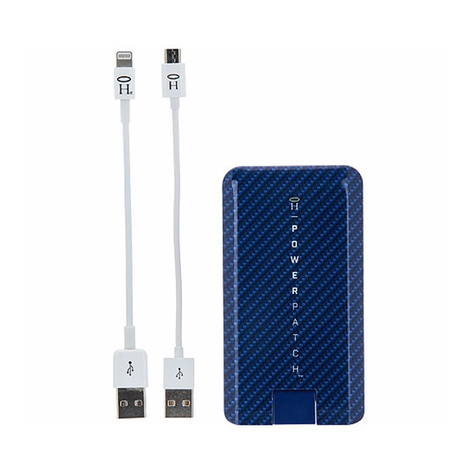
Halo
Halo Powerpatch Wireless operating instructions
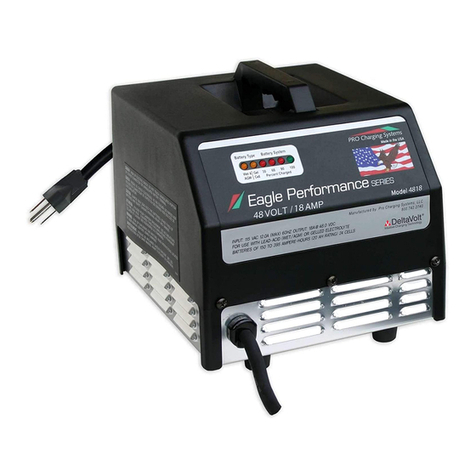
Pro Charging Systems
Pro Charging Systems 1212 Safety, installation and operating instructions
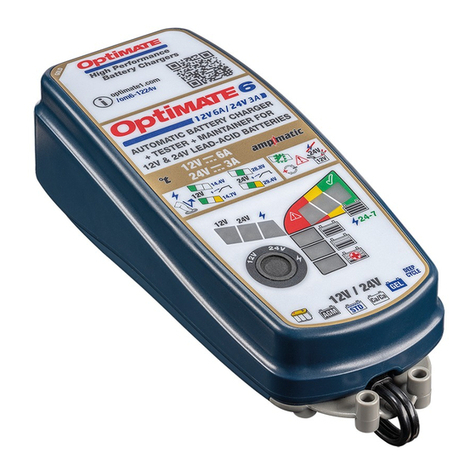
TecMate
TecMate OptiMate 6 TM380 Instructions for use
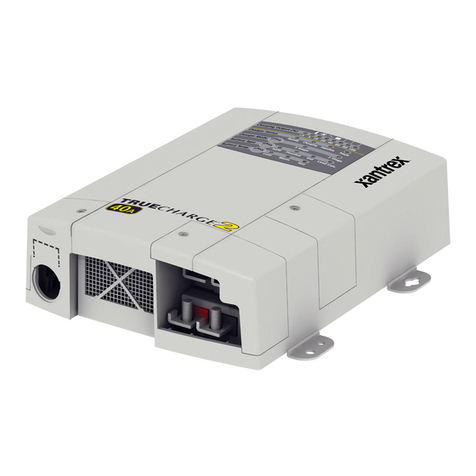
Xantrex
Xantrex Truecharge2 804-1220-02 owner's guide
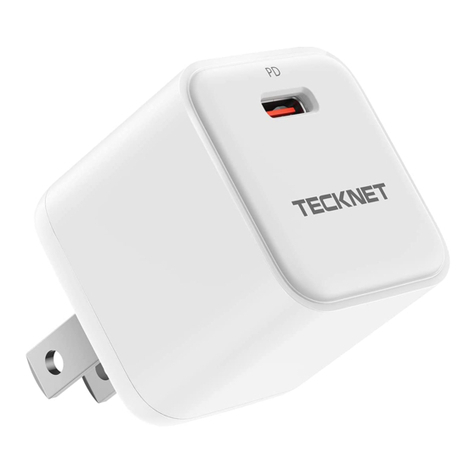
Tecknet
Tecknet TK-PC002 user manual
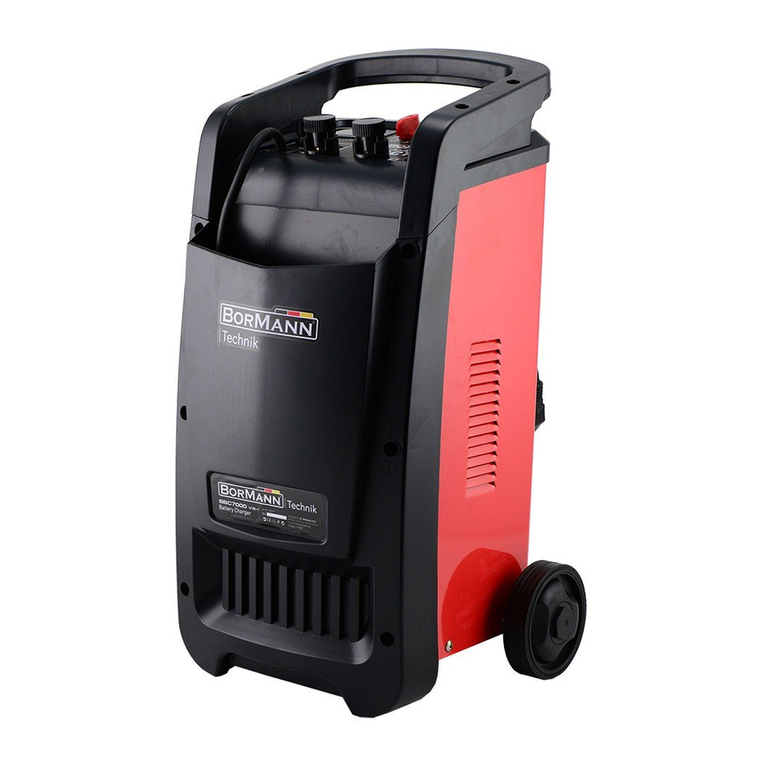
BorMann
BorMann Technik BBC7000 owner's manual

